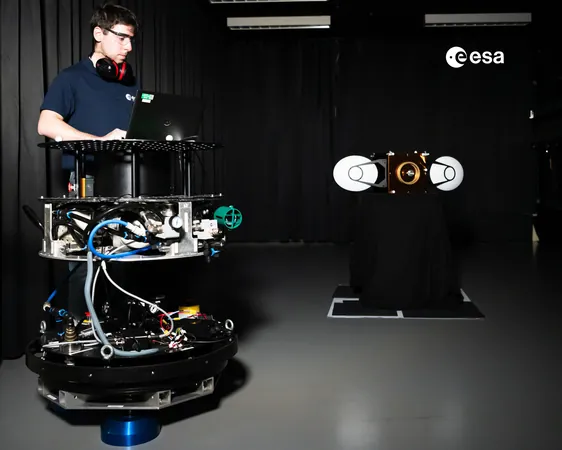
Breakthrough Laser Technology Could Transform Cancer Detection
2025-04-09
Author: Wei
Revolutionizing Cancer Diagnostics
In a groundbreaking development, researchers from Ludwig-Maximilians-Universität München (LMU) have unveiled a revolutionary method that could change how we detect cancer. Utilizing pulsed infrared light, this innovative technique identifies molecular signatures in blood plasma that may signify the presence of various cancers, potentially eliminating the need for invasive biopsies.
The Power of Electric-Field Molecular Fingerprinting
Leading the charge is Dr. Mihaela Žigman from the Max Planck Institute of Quantum Optics, who has co-authored a pivotal study published in ACS Central Science. The research highlights electric-field molecular fingerprinting (EMF) as a robust platform for detecting diseases under real-world conditions, painting a hopeful picture for non-invasive cancer diagnosis.
Understanding Cancer Through Molecular Patterns
The molecular composition of biofluids, especially blood plasma, can reveal much about an individual’s health. Plasma, the liquid component of blood, transports various molecules such as proteins and metabolites, which can indicate potential health issues. Utilizing a broader spectrum of molecular analysis could lead to faster, more affordable cancer diagnostics, shifting the paradigm of early detection.
Harnessing Machine Learning for Detection
In their proof-of-concept study, the team analyzed blood samples from over 2,500 participants, including those diagnosed with lung, prostate, breast, or bladder cancer. By employing machine learning, they trained a model to identify unique molecular patterns linked to these cancers by assessing the infrared molecular fingerprints produced from the blood plasma.
Promising Results in Lung Cancer Detection
The results were compelling, with the model achieving an impressive accuracy rate of up to 81% in discerning lung cancer signatures from non-cancerous samples. This level of accuracy not only validates the technique but also demonstrates its potential application in realistic clinical settings.
Challenges Ahead for Comprehensive Detection
While the results for lung cancer detection were promising, the model showed lower accuracy rates for the other three cancer types. The researchers acknowledged this as an area needing further refinement, emphasizing the importance of improving measurement reproducibility and validating the technique across diverse patient groups.
The Future of Cancer Screening
Looking ahead, the research team is eager to enhance the method's capabilities and expand its application to detect other cancers and health conditions. Future advancements—such as enhanced sensitivity, broader spectral coverage, and multidimensional analyses—could significantly elevate its biomedical utility.
A New Dawn for Cancer Diagnostics
Dr. Žigman encapsulated the study’s potential for transforming clinical diagnostics, asserting that, with continued development and adequate validation, laser-based infrared molecular fingerprinting could revolutionize cancer screening, changing how we approach diagnosis and treatment. This innovative method could soon empower early detection and improve patient outcomes, paving the way for a new era in cancer care.




 Brasil (PT)
Brasil (PT)
 Canada (EN)
Canada (EN)
 Chile (ES)
Chile (ES)
 Česko (CS)
Česko (CS)
 대한민국 (KO)
대한민국 (KO)
 España (ES)
España (ES)
 France (FR)
France (FR)
 Hong Kong (EN)
Hong Kong (EN)
 Italia (IT)
Italia (IT)
 日本 (JA)
日本 (JA)
 Magyarország (HU)
Magyarország (HU)
 Norge (NO)
Norge (NO)
 Polska (PL)
Polska (PL)
 Schweiz (DE)
Schweiz (DE)
 Singapore (EN)
Singapore (EN)
 Sverige (SV)
Sverige (SV)
 Suomi (FI)
Suomi (FI)
 Türkiye (TR)
Türkiye (TR)
 الإمارات العربية المتحدة (AR)
الإمارات العربية المتحدة (AR)